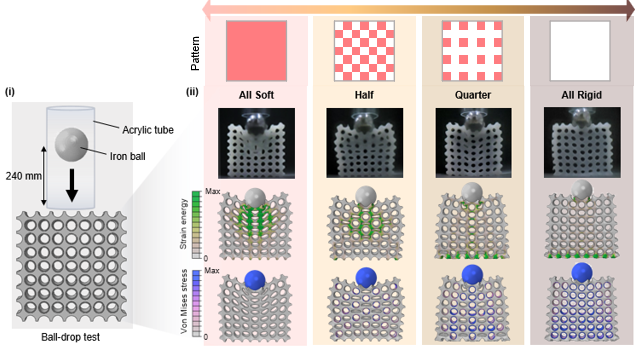Researchers in South Korea have created a remarkable first-ever encodable multifunctional material, which can be shifted into different shapes and mechanical properties in real-time. The inspiration for this new metamaterial came from an unlikely place: octopuses.
According to the researchers, this material surpasses the limits of existing materials and opens new possibilities for various fields that require quick adaptability, especially within robotics.
Overcoming the hard limits of soft machines
When compared to biological examples, soft machines tend to fall behind in terms of their ability to adapt to constantly changing surroundings. This is because there are significant limitations with their real-time tunability, as well as restrictions on the range of their reprogrammable properties and functionalities. That is, until now.
The new digitally programmable material has multiple remarkable mechanical capabilities, including shape-shifting and memory, stress-strain responses, and Poisson’s ratio (which shows how the cross-section of a deformable body changes under lengthwise stretching) under compression load.
In addition, the new material demonstrates application-oriented functionalities, such as tunable and reusable energy absorption and pressure delivery.
The breakthrough may usher in a new age of development for fully adaptive soft robots and smart interactive machines.
“We introduced a metamaterial composite system that allows for gradational and reversible adjustments in various mechanical information by translating encoded digital pattern information into discrete stiffness states of the mechanical pixels,” the team write in their paper.
To develop it, the team led by Professor Jiyun Kim in the Department of Materials Science and Engineering at UNIST, South Korea, introduced a new approach using graphical stiffness patterns, which allows for rich shape reconfigurability of a material. This let them independently switch between what they refer to as the “digital binary stiffness states” (basically soft or rigid states) of the material’s constituent units within a “simple auxetic” (a structure or material that has a negative Poisson’s ratio) that featured elliptical voids.
The material, the authors explain in their paper, achieves “in situ and gradational tunability in various mechanical qualities.”
“We have developed a metamaterial that can implement desired characteristics within minutes, without the need for additional hardware,” Jun Kyu Choe, the first author of the study and a student on the combined MS/PhD program of Materials Science and Engineering at UNIST, said in a statement.
“This opens up new possibilities for advanced adaptive materials and the future development of adaptive robots.”
Choe and colleagues demonstrated the material’s potential by way of an “adaptive shock energy absorbing material”, which adjusts its properties in response to sudden impacts. The material was able to limit the risk of damage or injury by minimizing the force transmitted to the protected object. Then the team turned the material into a “force transmission material”, which delivered force at desired locations and times.

Changing the pattern of activated pixels in the material impacts how it responds in a ball-drop experiment.
Image credit: UNIST (cropped)
By inputting specific digital commands, the material can operate adjacent LED switches, which allow precise control over force transmission pathways.
The metamaterial is also compatible with a range of existing devices and gadgets, as well as artificial intelligence technologies, including deep learning.
“This metamaterial, capable of converting digital information into physical information in real-time, will pave the way for innovative new materials that can learn and adapt to their surroundings,” added Professor Kim.
The study is published in Advanced Materials.
Source Link: Shape-Shifting Metamaterial Inspired By Octopuses Is A World First